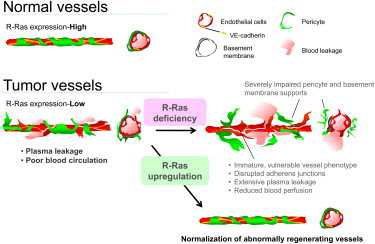Cancer Res:我国雷公藤内酯醇抗肿瘤研究获进展
2012-09-06 中科院上海药物研究所 中科院上海药物研究所
雷公藤内酯醇是中药雷公藤的主要生物活性成分,具有包括抗肿瘤在内的多重生物学作用。中科院上海药物研究所缪泽鸿课题组、李援朝课题组、丁健课题组与意大利博洛尼亚大学Giovanni Capranico实验室合作,在雷公藤内酯醇及其衍生物的抗肿瘤作用和机制研究中取得阶段性进展。 在阐明C14β位羟基取代的雷公藤内酯醇衍生物具有选择性体内抗肿瘤作用 (J Med Chem. 2009; 52: 5115–
雷公藤内酯醇是中药雷公藤的主要生物活性成分,具有包括抗肿瘤在内的多重生物学作用。中科院上海药物研究所缪泽鸿课题组、李援朝课题组、丁健课题组与意大利博洛尼亚大学Giovanni Capranico实验室合作,在雷公藤内酯醇及其衍生物的抗肿瘤作用和机制研究中取得阶段性进展。
在阐明C14β位羟基取代的雷公藤内酯醇衍生物具有选择性体内抗肿瘤作用 (J Med Chem. 2009; 52: 5115–5123) 的基础上,研究发现雷公藤内酯醇可升高细胞内低氧诱导因子1α(HIF-1α)水平却降低其转录活性,与其抗肿瘤作用相关 (Mol Cancer. 2010; 9:268)。已有研究显示,雷公藤内酯醇可以与通用转录因子TFIIH大亚基XPB直接结合,并引起RNA聚合酶II(RNAPII)大亚基Rpb1降解。
该合作研究深入揭示了雷公藤内酯醇作用于这一核心靶点的分子基础和意义。雷公藤内酯醇降低Rpb1水平与其细胞毒活性紧密相关,即阻滞RNAPII于基因的启动子处,减少基因启动子和外显子处染色质结合的RNAPII,增加Rpb1羧基末端结构域的磷酸化 (5位丝氨酸) 和泛素化。蛋白酶体抑制剂或CDK7抑制剂可减低雷公藤内酯醇降解Rpb1的能力。研究人员由此发现雷公藤内酯醇触发CDK7介导RNAPII降解的新模式,提出了雷公藤内酯醇结合XPB、降解RNAPII的通用机制。该机制可以很好地解释雷公藤内酯醇包括其强效抗肿瘤在内的多重治疗学特性 (Cancer Res.2012; doi:10.1158/0008-5472.CAN-12-1006)。
研究人员还受邀撰写雷公藤内酯醇专题综述,系统总结了雷公藤内酯醇的结构修饰、构效关系、作用与机制以及临床开发的研究进展 (Nat Prod Rep. 2012; 29: 457-475)。

doi: 10.1158/0008-5472.CAN-12-1006
PMC:
PMID:
Natural product triptolide mediates cancer cell death by triggering CDK7-dependent degradation of RNA polymerase II
Stefano Giustino Manzo, Zhao-Li Zhou, Ying-Qing Wang, Jessica Marinello, Jin-Xue He, Yuan-Chao Li, Jian Ding, Giovanni Capranico, and Ze-Hong Miao
Triptolide is a bioactive ingredient in traditional Chinese medicine that exhibits diverse biological properties, including anticancer properties. Among its many putative targets, this compound has been reported to bind to XPB, the largest subunit of general transcription factor TFIIH, and to cause degradation of the largest subunit Rpb1 of RNA polymerase II (RNAPII). In this study, we clarify multiple important questions concerning the significance and basis for triptolide action at this core target. Triptolide decreased Rpb1 levels in cancer cells in a manner that was correlated tightly with its cytotoxic activity. Compound exposure blocked RNAPII at promoters and decreased chromatin-bound RNAPII, both upstream and within all genes that were examined, also leading to Ser5 hyperphosphorylation and increased ubiqutination within the Rbp1 carboxy-terminal domain. Notably, co-treatment with inhibitors of the proteasome or the cyclin-dependent kinase CDK7 inhibitors abolished the ability of triptolide to ablate Rpb1. Together, our results show that triptolide triggers a CDK7-mediated degradation of RNAP II that may offer an explanation to many of its therapeutic properties, including its robust and promising anticancer properties.
本网站所有内容来源注明为“梅斯医学”或“MedSci原创”的文字、图片和音视频资料,版权均属于梅斯医学所有。非经授权,任何媒体、网站或个人不得转载,授权转载时须注明来源为“梅斯医学”。其它来源的文章系转载文章,或“梅斯号”自媒体发布的文章,仅系出于传递更多信息之目的,本站仅负责审核内容合规,其内容不代表本站立场,本站不负责内容的准确性和版权。如果存在侵权、或不希望被转载的媒体或个人可与我们联系,我们将立即进行删除处理。
在此留言












#研究获进展#
53